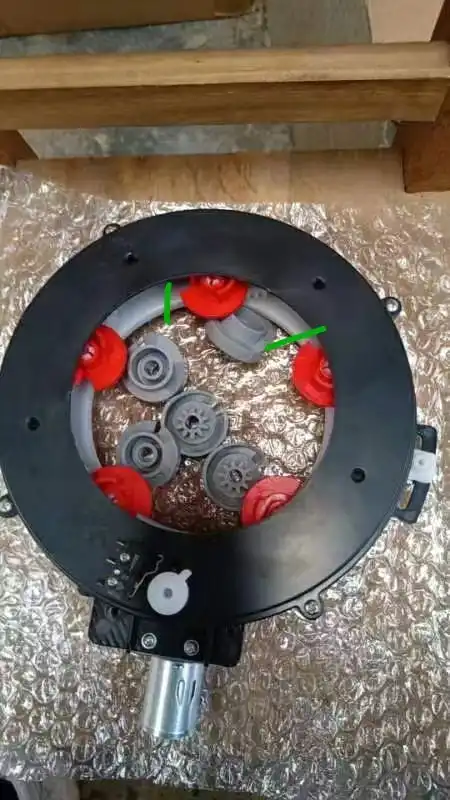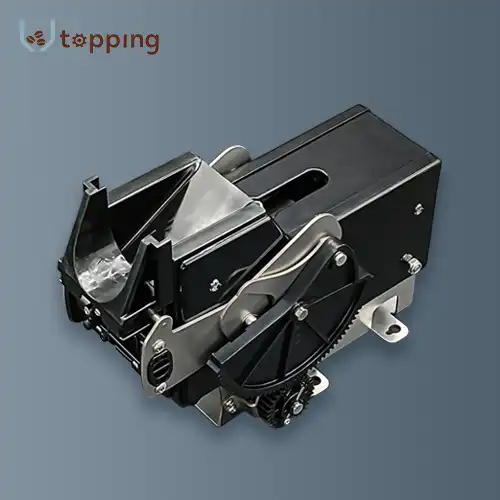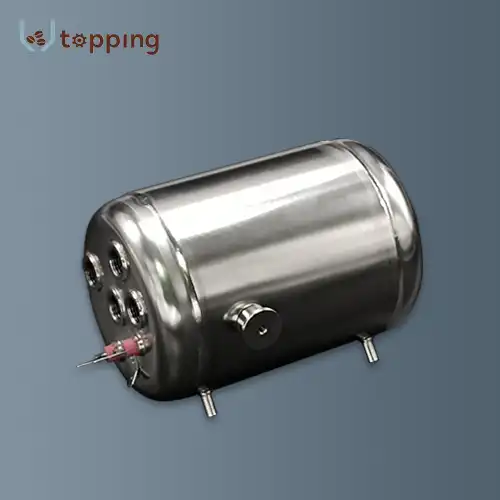What are the advantages and disadvantages of Coffee Machine O Rings of different materials?
2024-12-27 10:44:48
Coffee machines are complex devices that rely on numerous components to function properly. Among these, O-rings play a crucial role in ensuring proper sealing and preventing leaks. The choice of material for these O-rings can significantly impact the performance, durability, and safety of the coffee Machine O Rings. In this article, we'll explore the advantages and disadvantages of various materials used in coffee Machine O Rings, helping you understand which might be best suited for different applications and environments.
Natural Rubber NR
Natural rubber (NR) O-rings have been used in various applications for many years, including in some coffee machines. The primary advantages of NR O-rings lie in their excellent wear resistance and high elasticity. These properties make them particularly suitable for applications where the O-ring needs to withstand repeated compression and expansion cycles, which is often the case in coffee machines.
The elasticity of NR allows it to maintain a good seal even under varying pressures, which is crucial in coffee machines where pressure changes are common during the brewing process. Additionally, NR performs well when exposed to non-polar solvents, which can be beneficial in certain parts of the coffee machine where such substances might be present.
However, NR O-rings have some significant drawbacks that limit their use in modern coffee machines. One of the main issues is their tendency to age re latively quickly, especially when exposed to heat, light, and oxygen - all of which are present in a coffee machine environment. This aging process can lead to the coffee Machine O Ring becoming brittle and losing its sealing properties over time.
Another major disadvantage is NR's poor resistance to strong acids. Coffee, being slightly acidic, can gradually degrade NR O-rings, potentially leading to leaks or contamination of the coffee. Furthermore, NR is not suitable for use with hot water or steam, which are integral to the coffee brewing process. These limitations have led to the development and adoption of more suitable materials for coffee machine O-rings.
Fluororubber FKM
Fluororubber (FKM) O-rings represent a significant improvement over natural rubber for use in coffee machines. The standout feature of FKM is its excellent resistance to high temperatures, making it ideal for the hot environments found in coffee machines. FKM can withstand temperatures ranging from -60°C to +250°C, which covers the entire spectrum of temperatures encountered in coffee brewing and machine operation.
Another major advantage of FKM is its resistance to strong acids, strong alkalis, and high-temperature steam. This makes it particularly suitable for coffee machines, as it can withstand the acidic nature of coffee, the alkaline cleaning solutions often used in machine maintenance, and the hot steam generated during brewing. This resistance to various chemicals also means that FKM O-rings are less likely to degrade over time, leading to a longer lifespan and more consistent performance.
FKM also offers good compression set resistance, meaning it can maintain its sealing properties even after prolonged periods of compression. This is crucial in coffee machines where coffee Machine O Rings may be under constant pressure for extended periods.
However, the superior performance of FKM comes at a cost. FKM O-rings are significantly more expensive than those made from many other materials. This higher cost can impact the overall price of the coffee machine or its replacement parts. Additionally, while FKM's chemical resistance is generally an advantage, it can make these O-rings more challenging to bond or adhere to other materials if needed during the manufacturing process.
Silicone Rubber
Silicone rubber O-rings offer several advantages that make them a popular choice for coffee machine manufacturers. One of their most notable features is their excellent resistance to high temperatures. Silicone can withstand temperatures ranging from approximately -100°C to +300°C, which is more than sufficient for the heat generated in coffee machines.
This high-temperature resistance makes silicone O-rings suitable for use in various parts of the coffee machine, including areas exposed to hot water and steam. They maintain their flexibility and sealing properties even under these challenging conditions, ensuring consistent performance over time.
Silicone also has good resistance to oxidation, which is beneficial in the oxygen-rich environment of a coffee machine. This resistance helps prevent degradation of the O-ring, contributing to a longer lifespan. Furthermore, silicone is generally considered food-safe, making it an appropriate choice for components that may come into contact with coffee or water intended for consumption.
However, silicone O-rings do have some limitations. Their wear resistance is only moderate, which means they may not be the best choice for applications involving high friction or abrasion. In a coffee machine, this could be a concern in areas with moving parts or where the O-ring is subject to frequent compression and decompression cycles.
Additionally, while silicone's chemical resistance is generally good, it's not as comprehensive as that of some other materials like FKM. This means silicone coffee Machine O Rings may not be suitable for all parts of the coffee machine, particularly those exposed to harsh cleaning chemicals or certain oils that might be present in flavored coffees.
Ethylene Propylene Rubber EPDM
Ethylene propylene rubber (EPDM) O-rings offer a unique set of properties that can be advantageous in certain coffee machine applications. One of EPDM's standout features is its excellent resistance to heat, aging, and ozone. This makes EPDM O-rings particularly durable, able to maintain their properties over extended periods even when exposed to challenging environmental conditions.
The temperature range of EPDM, typically from -50°C to +150°C, is well-suited to the operating conditions of most coffee machines. This range covers both the cold water input and the hot water used in brewing, making EPDM versatile for various parts of the machine.
EPDM also boasts good resistance to a wide range of chemicals, including many cleaning agents and descaling solutions commonly used in coffee machine maintenance. This chemical resistance contributes to the longevity of EPDM O-rings, potentially reducing the frequency of replacements and maintenance.
However, EPDM has some significant limitations that restrict its use in coffee machines. Most notably, it's generally not recommended for food contact applications. While some food-grade EPDM formulations exist, they are not as common and may not have the same performance characteristics as standard EPDM.
Another drawback is EPDM's incompatibility with aromatic hydrocarbons, which can be found in some coffee oils. This means EPDM coffee Machine O Rings might not be suitable for parts of the machine that come into direct contact with coffee grounds or brewed coffee.
Polyurethane PU
Polyurethane (PU) O-rings offer some unique advantages that can be beneficial in specific coffee machine applications. The most notable feature of PU is its outstanding wear resistance and fatigue resistance. This makes PU O-rings particularly suitable for parts of the coffee machine that involve repeated movements or high-pressure sealing.
In coffee machines, these properties could be advantageous in areas such as the pump mechanism or in parts that undergo frequent pressure changes. PU's ability to withstand repeated compression and decompression cycles without significant degradation can contribute to longer-lasting seals and potentially reduce maintenance frequency.
PU also offers good resistance to oils and many solvents, which can be beneficial in coffee machines where various oils from coffee beans are present. Additionally, PU has excellent tear resistance, making it less likely to be damaged during installation or removal.
However, the most significant limitation of PU O-rings for coffee machine applications is their relatively narrow operating temperature range. Typically functioning best between -50°C and +90°C, PU may not be suitable for the hottest parts of the coffee machine, particularly those exposed to steam or very hot water.
This temperature limitation means that PU O-rings are often restricted to use in the cooler parts of the machine, such as water intake valves or in the cold water reservoir. It's crucial to carefully consider the specific temperature requirements of each component when deciding whether to use PU O-rings.
Coffee Machine O Rings For Sale
When it comes to selecting Coffee Machine O Rings, it's crucial to choose materials that are both durable and food-safe. Topping Motor, a manufacturer of coffee machine components, offers a range of O-rings suitable for various parts of coffee machines. Their O-rings are available in food-grade silicone, rubber, or EPDM (Ethylene Propylene Diene Monomer), providing options to suit different requirements within the machine.
Food-grade silicone O-rings are an excellent choice for many coffee Machine O Rings due to their high-temperature resistance and food safety. Rubber O-rings, likely made from specific food-safe formulations, can offer good elasticity and sealing properties. EPDM O-rings, while not typically used in direct food contact areas, can be suitable for other parts of the machine due to their excellent heat and chemical resistance.
If you're in the market for coffee machine O-rings and are considering your options for manufacturers, you can reach out to Topping Motor at sales@huan-tai.org for more information about their product range and specifications.
References
1. Parker O-Ring Handbook. (2018). Parker Hannifin Corporation.
2. Dupont. (2023). "Fluoroelastomers and Perfluoroelastomers Product Selection Guide."
3. Apple Rubber Products Inc. (2023). "O-Ring Material Selection Guide."
4. Marco Rubber & Plastics. (2023). "O-Ring Materials Comparison Chart."
5. Precision Associates, Inc. (2022). "O-Ring Material Selection Guide."
6. Greene, Tweed. (2023). "Seal Design Guide."

.webp)

.webp)
.webp)
.webp)



